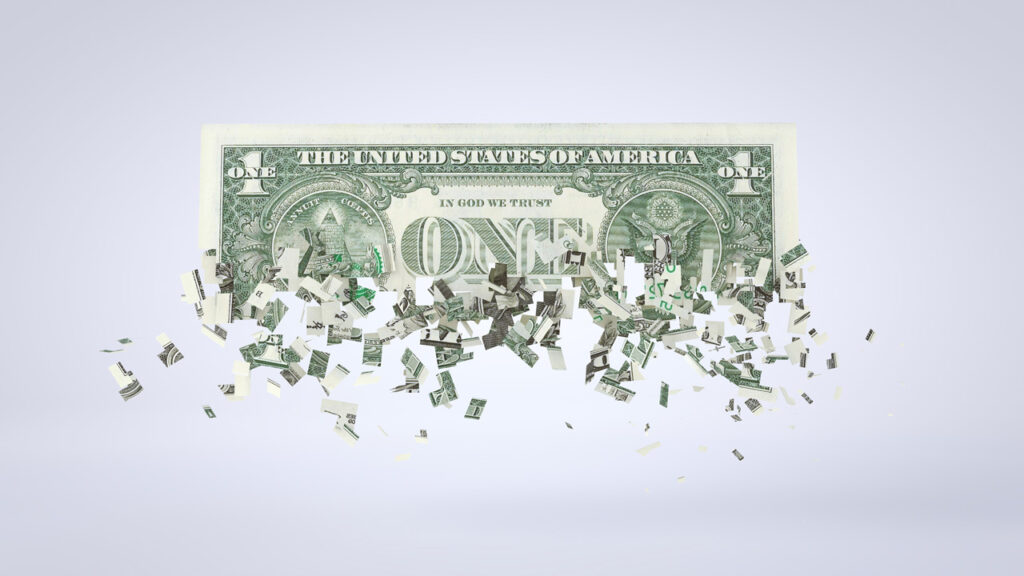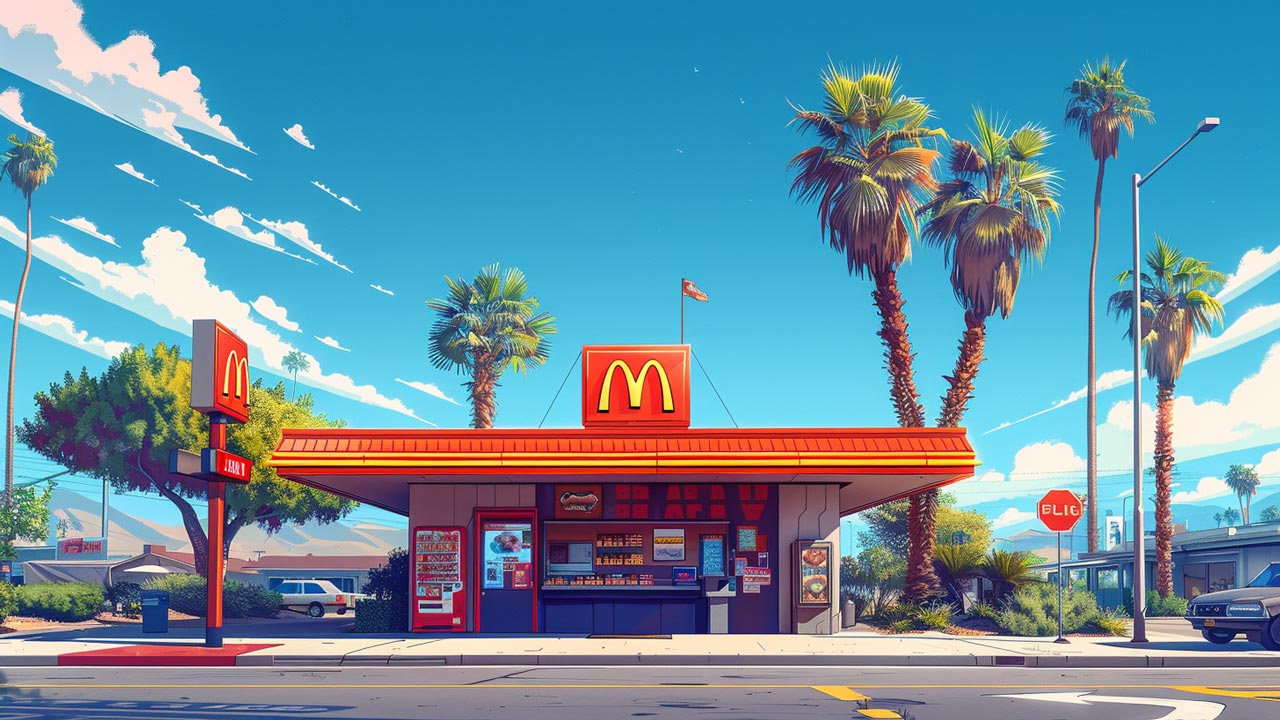The Real Threat Is a Market-Driven Dollar Downgrade
Last week, Fitch Ratings downgraded the US’s long-term credit rating from AAA to AA+. While the downgrade won’t significantly impact the US government’s ability to borrow, it should serve as a wake-up call because there is a much bigger problem looming on the horizon: a market-driven downgrade of the US dollar.
The bond market got pummeled last week with four losing days before a rally on Friday driven by a weaker-than-expected jobs report. That rally wasn’t enough to recover all the losses, and yields finished the week above 4% across the board.
We also saw a reversion in the 5-year and 30-year yields, with the 30-year closing above the 5-year for the first time in quite a while. The 5-year and 10-year yields remain inverted, still flashing recession.
The upward movement of yields on the long end of the curve could indicate that bond traders are starting to reckon with reality, but there is still a long way to go. Generally, investors still seem to think that the Fed will be able to push price inflation back to the low levels we saw during the decade preceding the pandemic. They haven’t figured out that this easing price inflation is transitory. So, the bond market remains priced for a fantasy, although it appeared the smoke might be clearing as yields move up.
Supply and demand dynamics are also driving yields higher. In just two months since Congress reached a deal and suspended the debt ceiling for two years, the national debt has surged by a staggering $1.2 trillion. And the borrowing isn’t going to slow down anytime soon. Last week, the Treasury Department upped its projection for third-quarter debt issuance to $1.01 trillion. That’s up from the $733 billion Q3 projection it imagined in May.
Rising interest rates make a “soft landing” (tackling inflation without a recession) less likely because they are problematic for everybody. Along with the US government, corporations and consumers are buried under debt. As rates rise, it becomes more and more difficult to service that debt or to continue propping up the bubble economy with additional borrowing.
Oil prices also continued their upward climb last week. Oil is up about 30% in this most recent run. The fact that the oil chart looks bullish and the bond chart looks bearish makes sense if the underlying problem in the economy is inflation.
The Fitch Downgrade and the Bigger Problem
With the current debt ceiling fight resolved, Fitch removed the US’s Issuer Default Rating from “watch negative” to “a stable outlook.” But the end of the debt ceiling standoff wasn’t enough to alleviate fears about America’s debt trajectory.
The repeated debt-limit political standoffs and last-minute resolutions have eroded confidence in fiscal management.”
Nevertheless, the markets generally brushed off the Fitch downgrade. And in the big scheme of things, it is irrelevant.
It doesn’t even make sense to apply a credit rating on the US government. The point of a rating is to indicate the likelihood of default. Nobody is really worried about the US government defaulting because the Federal Reserve can always create more money.
But that doesn’t mean there is no risk in buying US Treasuries. And that risk applies to any bond you buy with US dollars. It doesn’t matter how credit-worthy the issuer of the bond happens to be. In fact, the same risk applies if you take your dollars and stuff them under the mattress.
That risk is inflation.
Every day, your dollar is losing its purchasing power.
Dollar depreciation is like a default. If a government has to resort to a printing press to pay off its bills, you still get your money back when a government bond matures, but you lose purchasing power. The dollars you get back won’t buy as much stuff.
So, an honest rating of US government debt would be junk status — not because of the default risk but because of the high likelihood that it will continue to inflate away the dollar’s value.
In fact, applying junk status to US debt is insults junk status. You are guaranteed to lose with a long-term US Treasury. There is no chance that you will buy a 30-year Treasury with a yield of just over 4% today and break even at the end of that term. Sure, you’ll get all of your dollars back (most likely), but those dollars won’t have anywhere near the value that they had when you loaned them out.
That raises a key question: if you’re guaranteed to lose with a bond, what should the rating be?
At some point, people need to realize that the fact the US government will have to print money in order to pay its debts is a reason not to buy Treasuries. Keep in mind, Treasuries are just future payments of US dollars. So, you should really be looking at the rating of the currency and consider what the dollar will be worth in 30 years. Will that 4% interest cover what you lose through inflation over that period of time and give you some kind of positive return?
The bottom line is the rating is meaningless. All US government debt is junk. People need to get out of all dollar-denominated debt as quickly as they can.





 Whenever an election year rolls around, domestic manufacturing becomes a more central theme of discussion. Candidates from both sides, who seem to disagree on almost everything else, never waver in their commitment to auto manufacturers in Detroit and the steel industry. Republicans and Democrats never forget to remind the American public that they will try […]
Whenever an election year rolls around, domestic manufacturing becomes a more central theme of discussion. Candidates from both sides, who seem to disagree on almost everything else, never waver in their commitment to auto manufacturers in Detroit and the steel industry. Republicans and Democrats never forget to remind the American public that they will try […] The wizards at the Fed and US Treasury have been forced to acknowledge that their “transitory,” inflation is, in fact, quite “sticky.” And with the inflation elephant now acknowledged by the circus of high finance, Treasury yields keep inching up, recently reaching 4.7% — the highest since November. The Fed is stuck: It needs to raise interest rates to tame inflation and […]
The wizards at the Fed and US Treasury have been forced to acknowledge that their “transitory,” inflation is, in fact, quite “sticky.” And with the inflation elephant now acknowledged by the circus of high finance, Treasury yields keep inching up, recently reaching 4.7% — the highest since November. The Fed is stuck: It needs to raise interest rates to tame inflation and […] The solution to a problem shouldn’t make the problem worse. But apparently, California’s policy makers missed that memo. On April 1st, the state instituted a $20 minimum wage for fast food workers, the highest in the US. With California’s absurdly high cost of living, the policy appeared to make life more manageable for low-income residents. Unfortunately, as the adage goes, “If it sounds too […]
The solution to a problem shouldn’t make the problem worse. But apparently, California’s policy makers missed that memo. On April 1st, the state instituted a $20 minimum wage for fast food workers, the highest in the US. With California’s absurdly high cost of living, the policy appeared to make life more manageable for low-income residents. Unfortunately, as the adage goes, “If it sounds too […] The monetary battle of the 20th century was gold vs. fiat. But the monetary battle of the 21st century will be gold vs. bitcoin. With Wall Street jumping into the game with bitcoin ETFs, a bitcoin halving recently splitting the block reward for miners in half, and both gold and bitcoin hovering near their all-time highs, it’s a great time for […]
The monetary battle of the 20th century was gold vs. fiat. But the monetary battle of the 21st century will be gold vs. bitcoin. With Wall Street jumping into the game with bitcoin ETFs, a bitcoin halving recently splitting the block reward for miners in half, and both gold and bitcoin hovering near their all-time highs, it’s a great time for […] What is Nvidia? If you’re a committed gamer the question may sound like nonsense. Nvidia, which was founded in 1993, is a tech company that makes GPUs and other products. It originally specialized in making products for the video game industry, that assisted in 3D rendering. If you were a committed gamer, you probably owned their products. If you weren’t, you might not have heard of them.
What is Nvidia? If you’re a committed gamer the question may sound like nonsense. Nvidia, which was founded in 1993, is a tech company that makes GPUs and other products. It originally specialized in making products for the video game industry, that assisted in 3D rendering. If you were a committed gamer, you probably owned their products. If you weren’t, you might not have heard of them.